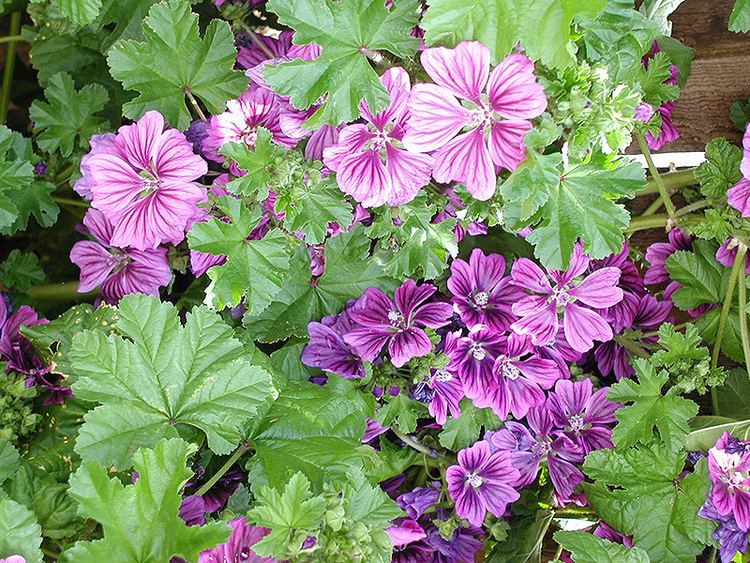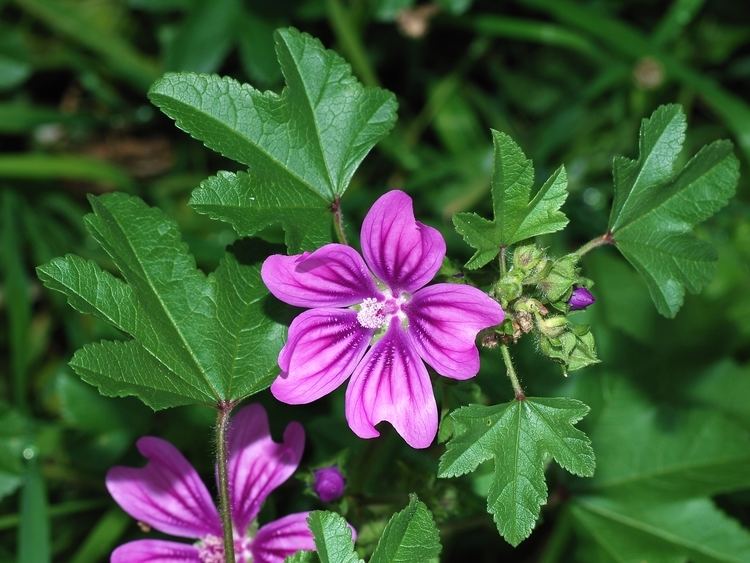Higher classification Mallow | Subfamily Malvoideae Scientific name Malva sylvestris Rank Species | |
 | ||
Similar Mallow, Marsh mallow, Malva neglecta, Yarrow, Mallows | ||
Malva sylvestris
Malva sylvestris is a species of the mallow genus Malva in the family of Malvaceae and is considered to be the type species for the genus. Known as common mallow to English-speaking Europeans, it acquired the common names of cheeses, high mallow and tall mallow (mauve des bois by the French) as it migrated from its native home in Western Europe, North Africa and Asia through the English-speaking world. M. sylvestris is a vigorously healthy plant with showy flowers of bright mauve-purple, with dark veins; a handsome plant, often standing 3 or 4 feet (1 m) high and growing freely in fields, hedgerows and in fallow fields.
Contents
- Malva sylvestris
- Mallow health benefits of the malva sylvestris mallow plant
- Common names
- Description
- Distribution
- Uses
- Subspecies
- Cultivation
- Chemistry
- References

Mallow health benefits of the malva sylvestris mallow plant
Common names

It is one of several species of different genera sometimes referred to as Creeping charlie, a term more commonly applied to Glechoma hederacea (ground ivy).
Description

Malva sylvestris is a spreading herb, which is an annual in North Africa, biennial in the Mediterranean and a perennial elsewhere Three feet (one meter) tall, (3 meters has been observed in a wild or escaped from cultivation setting, and several cultivated plants of 2 meter or more in height) with a growth habit which can be straight or decumbent, branched and covered with fine soft hairs or none at all, M. sylvestris is pleasing in appearance when it first starts to flower, but as the summer advances, "the leaves lose their deep green color and the stems assume a ragged appearance".
Stems and leaves: A thick, round and strong stem.



Distribution
As a native Malva sylvestris spreads itself on waste and rough ground, by roads and railways throughout lowland England, Wales and Channel Islands, Siberia and scattered elsewhere. It has been introduced to and has become naturalised in eastern Australia, in the United States, Canada and Mexico probably escaped from cultivation.
Source: USDA ARS GRIN
Uses
In 1931 Maud Grieve wrote that the "use of this species of Mallow has been much superseded by Marsh Mallow (Althaea officinalis), which possesses its valuable properties in a superior degree, but it is still a favourite remedy with country people where Marsh Mallow is not obtainable."
Subspecies
Plants previously often described as Malva sylvestris var. malaca are now considered a Cultivar Group Malva sylvestris Mauritiana Group.
Cultivation
It is often grown as an ornamental plant for its attractive flowers, produced for a long period through the summer. Numerous cultivars have been selected and named.
Cultivars of Malva sylvestris include: 'Alba', 'Annita', 'Aurora', 'Bardsey Blue', 'Blue Fountain', 'Brave Heart', 'Cottenham Blue', 'Gibbortello', 'Harry Hay', 'Highnam', 'Inky Stripe', 'Knockout', 'Magic Hollyhock', 'Mest', 'Mystic Merlin', 'Perry's Blue', 'Purple Satin', 'Richard Perry', 'Tournai', 'Windsor Castle', 'Zebrina' (soft lavender-purple striped with deep maroon veins) and 'Zebrina Zebra Magis'.
Source: Stewart Robert Hinsley
Chemistry
M. sylvestriscontains malvin and malonylmalvin. It also contains the naphtoquinone malvone A, which is also a phytoalaxin.
